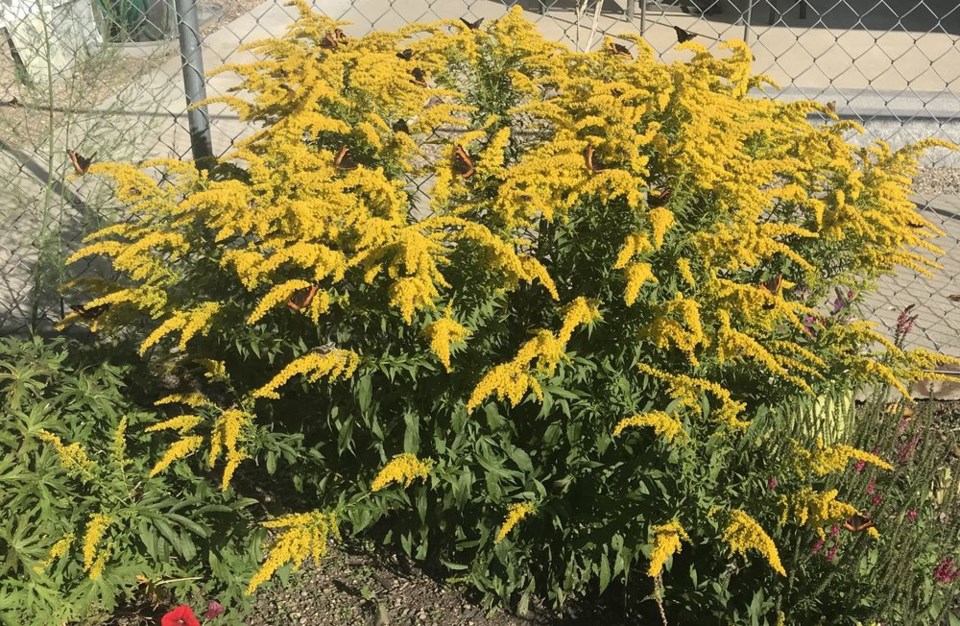Stella Holmes of Preeceville was the recipient of an unexpected surprise when she noticed her golden rod plant was a favourite resting spot for monarch butterflies last week.
"I have only had this plant for a couple of years and never noticed that the monarch butterflies seem to really love the plant," said Holmes. She was surprised to see so many on her plant and enjoyed watching the butterflies for hours.
Goldenrod is a source of mild debate in the plant world, stated the golden rod website. Some say this plant is a , while others deem it an invasive . The answer is actually a matter of opinion and growing it in a yard is personal preference. Goldenrod is an attractive plant only when in bloom, and its stalk and leaves have a "weedy" look to them. Its bloom time varies from midsummer to late summer through fall, depending on the variety. For some, the beautiful two to three-month show is enough of a pleasure to earn it a spot in their wildflower garden.
There are many species of this  perennial. But generally speaking, this plant is tall and slim (occasionally growing as high as 10 feet tall) with fluffy, golden flower spikes. Most likely, the origin of goldenrod's common name refers to both the flower's colour and the plant's spindly presentation. The genus name comes from two Latin words: solidus (meaning "whole") and ago (meaning "make"). In a medicinal sense, this plant can "make you whole," as the name alludes to its uses as both an anti-inflammatory and a diuretic.1
Goldenrod is an opportunist and can quickly overtake a garden. But for those versed in regular maintenance, it can be a true delight to any pollinator garden. Goldenrod is not widely available as seedlings, due to its invasive nature, but propagating from seed is said to be easy.
There are over a dozen species of Solidago that grow wild in the New England region of the United States alone. ³§´Ç±ô¾±»å²¹²µ´ÇÌý³¦²¹²Ô²¹»å±ð²Ô²õ¾±²õÌýis especially pretty and very common (hence the name "common goldenrod"). Solidago speciosa is a shorter variety, growing two to three feet tall, and is so striking that its common name is "showy goldenrod."
Goldenrod is widely known as a plant that ,making it the perfect addition to any butterfly garden. Canada goldenrod, in particular, is a food source for various butterflies, including the monarch, clouded sulfur, American small copper, and gray hairstreak. Goldenrod also attracts a number of other insects, ,so adding it to a pollinator garden is said to be a good choice.




